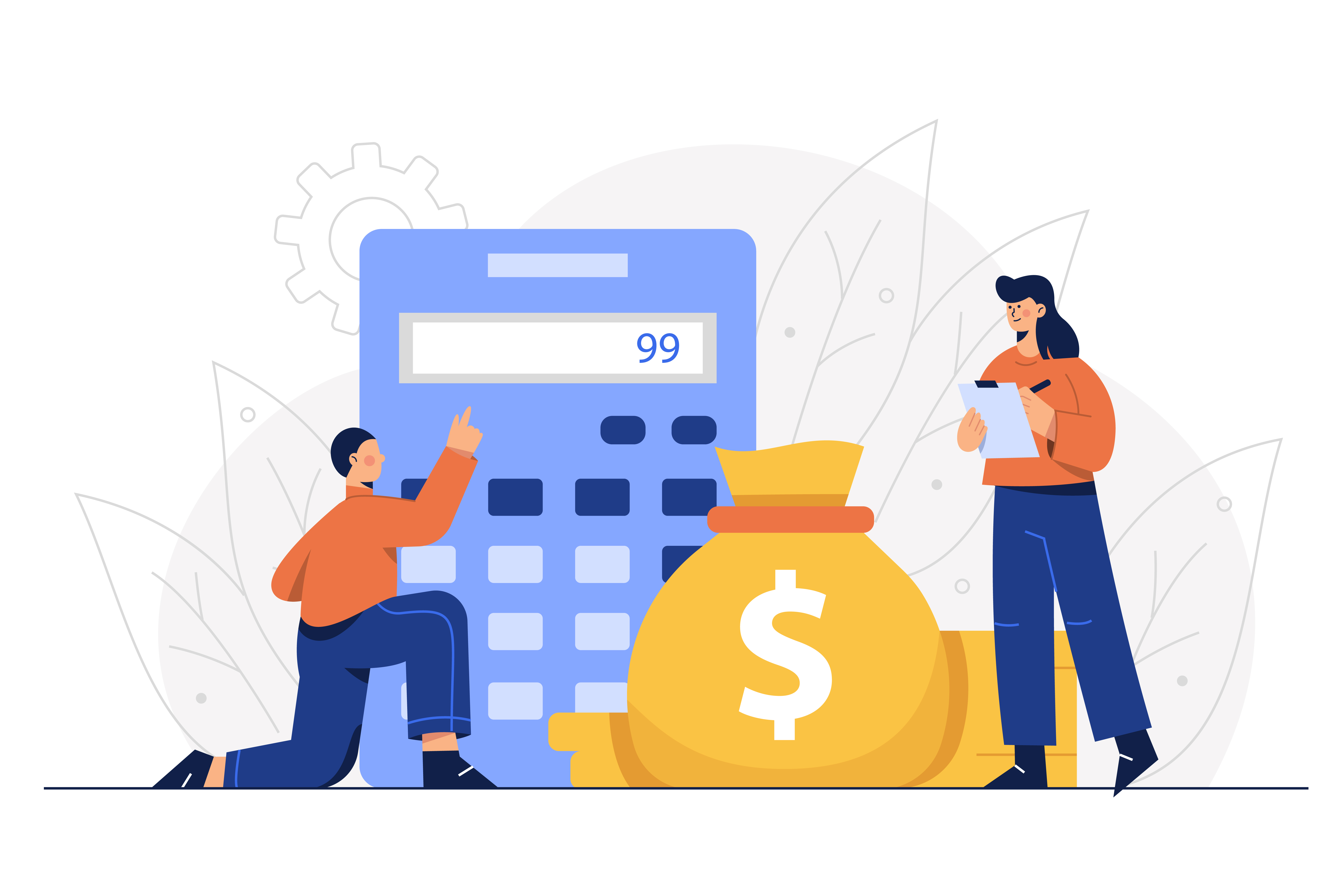Due to different resources, the average cost of a simple web app can reach $80,000. More complicated options can cost up to $250,000. Of course, the price depends on different factors. Admiral Studios has done deep research on the average cost of web application development in 2025, let’s break it down!

What Factors Affect the Web Application Development Cost?
Creating a web application is an investment. Whether it’s a small project or a large platform, the price depends on many things. Some are obvious, like design and features. Others, like maintenance and team location, can change the final app development price.
Complexity of the Application
The more features an app has, the more work it takes to build. A simple website application development with a few pages and basic functions costs less. A complex app with interactive tools, advanced security, and integrations costs more:
- Simple apps (landing pages, small business sites) can cost between $5,000 and $30,000.
- Mid-level apps (marketplaces, social platforms) range from $30,000 to $150,000.
- Large-scale apps (enterprise software to develop web applications, fintech platforms) can go beyond $250,000.
If your app has unique features like AI, video streaming, or blockchain, expect higher costs of app development.
Design and User Experience
Good design makes an app easy to use. A well-planned layout helps users find what they need quickly.
- Basic design (simple layouts, standard templates) costs around $5,000 to $15,000.
- Custom design (unique branding, animations, special UI/UX elements) can cost $15,000 to $50,000.
If the app has animations, complex interactions, or high-end visuals, costs will rise. A smooth experience keeps users coming back, so cutting corners here may hurt in the long run.
Development Team Location
Where your developers live affects the web app pricing. According to Upwork, labor costs vary by country:
- Developers in the US, UK, Canada charge between $100 to $250 per hour.
- Developers in Eastern Europe charge between $30 to $100 per hour.
- Developers in Ukraine charge between $25 to $55 per hour.
Hiring an overseas team can save money. But, working across different time zones and languages may slow progress.
Features and Functionality
More features mean more coding, testing, and fixing. The cost depends on what your app needs.
- Basic features (logins, simple dashboards) can cost $10,000 to $30,000.
- Advanced features (real-time chat, payments, file uploads) range from $30,000 to $80,000.
- High-end features (AI, machine learning, blockchain) can add $50,000 or more to the total.
Every extra function adds to web app development time. Some features, like payment gateways, also require extra security measures.

Backend and Database
The backend is what powers the app. It manages user accounts, stores information, and connects everything together.
- Basic backend (for simple apps) can cost $10,000 to $40,000.
- Complex backend (for large-scale apps with multiple users) can go beyond $100,000.
A strong backend keeps an app running smoothly, even with thousands of users. If it’s poorly built, crashes and security issues may become a problem.
API Integrations
APIs connect your app to other services. If your app needs third-party tools like Google Maps, payment gateways, or social media logins, costs will go up.
- Basic API integrations (Google Maps, social media logins) cost around $5,000 to $15,000.
- More complex integrations (CRM systems, financial services) range from $15,000 to $50,000.
Some APIs are free, but others charge based on usage. If your app depends on outside services, make sure to check ongoing costs.
Security Features
Without security, apps are easy targets for hackers. Protecting user data is necessary, especially for apps that handle payments or personal information.
- Basic security (SSL, two-factor authentication) costs around $5,000 to $10,000.
- Advanced security (encryption, fraud detection) can add $20,000 or more.
Skipping security can lead to serious problems. A data breach can damage trust and cost even more to fix.
Maintenance and Updates
Building an app is just the beginning. Keeping it running takes regular updates, bug fixes, and improvements.
- Basic maintenance (bug fixes, small updates) costs $5,000 to $20,000 per year.
- Full support (new features, performance upgrades) can go beyond $50,000 per year.
Apps that stay updated work better and last longer. Ignoring maintenance can lead to crashes, slow speeds, and security risks.
Testing and Quality Control
Before launching, an app must be tested. Developers check for bugs, fix problems, and make sure everything works as expected.
- Basic testing (manual checks, small apps) costs around $5,000 to $15,000.
- Advanced testing (automated testing, security checks) can cost $20,000 or more.
Skipping testing leads to apps that break, freeze, or frustrate users. A well-tested app works smoothly and keeps users happy.
Hosting and Cloud Services
Once an app is ready, it needs a place to run. Hosting services keep the app online and accessible to users.
- Basic hosting (shared servers, small apps) costs $20 to $100 per month.
- Cloud hosting (AWS, Google Cloud) can range from $500 to $10,000 per month, depending on traffic.
The more users an app has, the more hosting power it needs. High traffic requires strong servers to prevent slow loading times or crashes.
Marketing and Launch
An app needs users to succeed. Marketing helps people find and use it.
- Basic marketing (social media, small campaigns) costs $5,000 to $20,000.
- Large marketing campaigns (ads, influencers, PR) can go beyond $50,000.
Even the best apps can fail if no one knows about them. A solid marketing plan brings in users and helps the app grow.
The price of creating a web app depends on many things. Simple apps cost less, while complex ones require more time and money. Every feature, from design to security, adds to the final bill. Cutting costs in the wrong areas can lead to problems later. A well-built app runs better, lasts longer, and keeps users satisfied. If you're planning a web application, knowing these costs will help you set the right budget.

How Much Does It Cost to Develop an App?
Building an app can be cheap or expensive, depending on the features, design, and who builds it. A simple app price is lower than a custom app development cost. Understanding the differences between price ranges can help you decide what works for your needs.
Low-Cost Apps ($5,000 – $20,000)
Apps in this range are basic. They focus on simple functions without advanced features. Small businesses and startups with limited budgets often choose this option. A low-cost app usually includes a simple design and core features. It may not have custom animations or complex user interactions. Freelancers or small teams usually build these apps, often from regions where the average cost to build an app is lower.
These apps work well for testing an idea before committing to a larger budget. However, they may lack high-end security, scalability, and advanced design. They may also have limited customer support or maintenance options.
Mid-Range Apps ($20,000 – $100,000)
The web app pricing here can change depending on some aspects. Most business apps fall into this category. These apps are more polished, with better design and user experience. They may include interactive features, payment processing, or basic integration with other services. Businesses that want a professional-looking app without spending too much often choose this range.
Mid-range apps take longer to build than low-cost ones, sometimes several months. Experienced freelancers or professional agencies handle these projects. They focus on smooth performance, responsive design, and improved security. Some advanced features, like artificial intelligence or augmented reality, may require higher costs of developing an app.
High-End Apps ($100,000 – $250,000+)
Apps in this range offer advanced features, high security, and custom design. Large businesses and well-funded startups often choose this option. These apps include artificial intelligence, real-time updates, or complex user interactions. Banking apps, large e-commerce platforms, and social media networks require this level of investment.
A team of experts, including developers, designers, and security specialists, works on these apps. Developing a web app takes months or even years. Ongoing maintenance, updates, and testing are necessary to keep the app running smoothly. These options provide the best performance but require a significant cost of creating an app.

App Development Expenses
Creating an app involves more than just development costs. Several additional expenses can arise during the process. Understanding these can help in budgeting effectively.
Hosting and Servers
Every web app needs a place to run. Hosting services provide the space and resources required to keep the app online. According to the IEEE Computer Society, annual hosting rates for your web application might range from $75 to $200. The cost to build an app depends on factors like server specifications, bandwidth, and storage needs. Choosing a reliable hosting provider is crucial to ensure uptime and performance.
Maintenance and Updates
An app requires regular maintenance to fix bugs, add new features, and improve performance. Routine maintenance might run you anything from $500 to $12,000 per year. This ongoing investment ensures the app remains functional and relevant to users' needs.
Security and Compliance
Protecting user data is essential. Implementing security measures like SSL certificates is necessary to safeguard your website from cyber threats. The cost of an SSL certificate can range between $10 and $1,000 per month, depending on the level of security required. Compliance with industry standards may also incur additional expenses, especially in sectors like healthcare or finance.
Third-Party Services
Many apps rely on external tools for functionalities like payment processing, analytics, or email services. These third-party services often charge based on usage or offer subscription models. App development software costs can vary widely, from free tiers to several hundred dollars per month, depending on the service and usage levels. It's important to assess these needs early to incorporate them into the budget.
Customer Support
Providing support to users enhances their experience and builds trust. Depending on the scale, customer support can range from simple FAQ pages to dedicated support teams. Web app pricing can vary, with some businesses investing in 24/7 support services, while others may opt for more limited support options. Investing in adequate support ensures user satisfaction and can lead to higher retention rates.

Marketing and Advertising
To reach its audience, even the best apps require advertising. Search engine optimization (SEO), sponsored ads, and social media campaigns are examples of marketing initiatives. Several marketing organizations claim that companies who invest in web applications get a return on investment that is three to five times higher thanks to efficient marketing techniques. Setting aside money for marketing is crucial to drawing in and keeping people.
Testing and Bug Fixes
Before launching, thorough testing is crucial to identify and fix issues. This process can involve various testing methods and may require additional resources. While the specific costs of creating an app can vary, investing in quality assurance helps in delivering a polished product and reduces the risk of post-launch problems. Neglecting this step can lead to user dissatisfaction and increased costs in the long run.
Developing an app involves various additional expenses beyond the core development costs. By understanding and planning for these expenses, businesses can create a comprehensive budget that ensures the successful development and maintenance of their web applications.
The answers to your questions
How much does it cost to launch an app?
The cost to launch an app depends on its complexity. A simple app may cost around $5,000 to $20,000, while a feature-rich app can go beyond $100,000. Marketing, hosting, and maintenance add to the expenses.
What does it cost to create an app?
Building an app can cost anywhere from $10,000 to $500,000. The price depends on features, design, and developer rates. A basic app is cheaper, while complex apps with custom features cost more.
What are the key factors influencing web application development costs in 2025?
Developer location, app complexity, and required features affect the price. Security, third-party services, and ongoing maintenance also add to the cost. Custom apps are more expensive than template-based ones.
How do different types of web applications affect development costs?
A simple web app costs less because it has fewer features. A marketplace or SaaS platform costs more due to security, user management, and advanced functions. The more complex the app, the higher the cost.
How can businesses optimize their web application development budget?
Planning features carefully helps control spending. Choosing the right development team and using existing tools instead of custom solutions can lower costs. Regular maintenance prevents expensive fixes later.
What are the main steps in web application development cost estimation?
First, list the features and functions needed. Next, get quotes from developers or agencies. Finally, consider extra costs like hosting, security, and maintenance.
